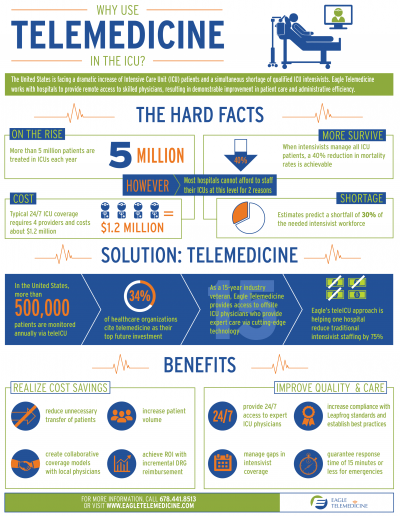Acute care patients are typically older and sicker today—and need intensive care at a rate that has reached a new national high. Consider these statistics from the Society of Critical Care Medicine:
- The number of critical care beds in the United States increased 15 percent in the past decade
- More than 5.7 million patients are admitted annually to ICUs in the United States
- Approximately 20 percent of acute care admissions are to an ICU
- Up to 58 percent of emergency department admissions result in an ICU admission
- All acute care hospitals have at least one ICU, and approximately 55,000 critically ill patients are cared for each day
And so, while hospitals set up clinics and develop new models of caring for a growing outpatient population, they also search for new ways to provide the more intensive care their inpatient population requires. That’s where telemedicine comes in.

